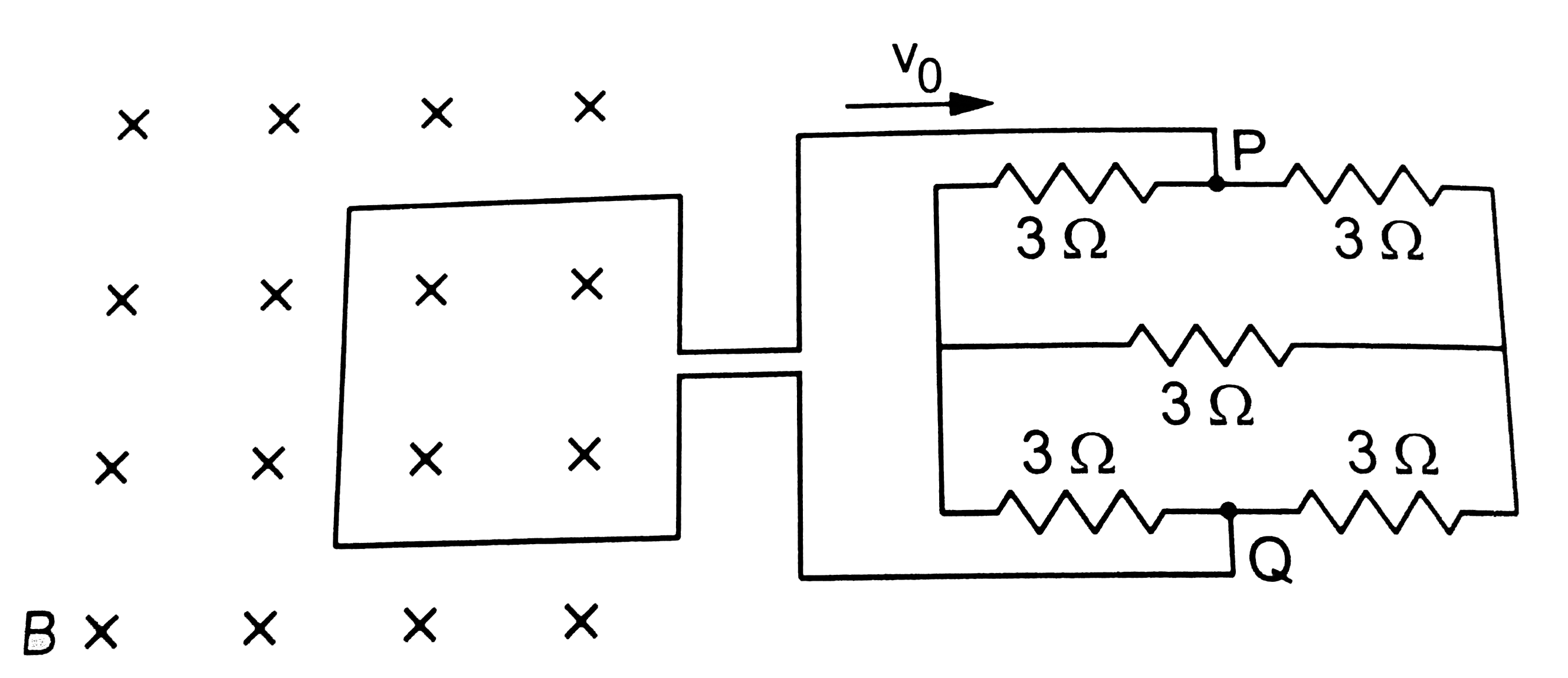There is a square membrane of area S. Find the number of natural vibrations perpendicular ot its plane in the frequency interval from ωtoω+dω if the propogation velocity of vibrations is equal to v.
Let ξ(x,y,t) be the displacement of the element at (x,y) at time t. Then it obeys the equation
∂2ξat2=V2(∂2ξ∂x2+∂2ξ∂y2)
where ξ=0atx=0,x=l,y=0 and y=l
We look for a solution in the form
ξ=Asink1sink2ysin(ωt+δ)
Then ω2=V2(k21+K22)
K1=nπl,k2=mπl
we write this as
n2+m2=(tωπV)2
Here n,m>0. Each paor (n,m) determines a mode. The total number of modes whose frequency is ≤ω is the area of the quadrant of a circle of radius lωπV i.e.,
N=π4(ωπV)2
Then dN=l22πV2ωdω=S2πv2ωdω.
where S=l2 is the area of the membrane.
Topper's Solved these Questions
- ATOMIC AND NUCLEAR PHYSICSBOOK - IE IRODOV, LA SENA & SS KROTOVCHAPTER - ATOMIC AND NUCLEAR PHYSICSEXERCISE - Radioactivity
35 Videos
- ATOMIC AND NUCLEAR PHYSICSBOOK - IE IRODOV, LA SENA & SS KROTOVCHAPTER - ATOMIC AND NUCLEAR PHYSICSEXERCISE - Nuclear Reaction
42 Videos
- ATOMIC AND NUCLEAR PHYSICSBOOK - IE IRODOV, LA SENA & SS KROTOVCHAPTER - ATOMIC AND NUCLEAR PHYSICSEXERCISE - Properties Of Atom
69 Videos
- DIRECT CURRENTBOOK - IE IRODOV, LA SENA & SS KROTOVCHAPTER - DIRECT CURRENTEXERCISE - All Questions
15 Videos
Similar Questions
Find the number of natural transverse vibration of a rigtht-angled parallelipoped of volume V in the frquency interval from ω→ω+dω if the propogation velocity of vibrations is equal to v
View SolutionFind the number of natural transverse vibration of a string length l in the frequency interval from ω to ω+dω if the propagation velocity of vibrations is equal to v. All vibrations are supposed to occur in one plane.
View Solution
Knowledge Check
A thin rod of mass m and length 2L is made to rotate about an axis passing through its center and perpendicular to it. If its angular velocity changes from O to ω in time t, the torque acting on it is
AmL2ω12tBmL2ω3tCmL2ωtD4mL2ω6t
In a chain of identical atoms the vibration frequency ω depends on wave number kas ω=ωmaxsin(ka/2), where ωmax is the maximum vibration frequency ω, a is the distance between neighbouring atoms. Making use of this dispersion relation, find the dependence of the number of longitudinal vibrations per unit. frequency interval on ω i.e., dN/ω, if the length of the chain is l. Having obtained dN/ω, find the total number N of possible longitudinal vibrations of the chain.
View SolutionFrom the conditions of the foregoing problem find the number of molecules reaching a unit area of a wall with the velocities in the interval from v to v+dv per unit time.
View SolutionA copper wire bent in the shape of a semicircle of radius r translates in its plane with a constant velocity v. A uniform magnetic field B exists in the direction perpendicular to the plane of the wire. Find the emf induced between the ends of the wire if (a) the velocity is perpendicular ot the diameter joining free ends, (b) the velocity is parallel to this diameter.
View SolutionA copper wire bent in the shape of a semicircle of radius r translates in its plane with a constant velocity v. A uniform magnetic field B exists in the direction perpendicular to the plane of the wire. Find the emf induced between the ends of the wire if (a) the velocity is perpendicular ot the diameter joining free ends, (b) the velocity is parallel to this diameter.
View SolutionShow that the frequency intervals between the neighbouring spectral lines of a true ratational spectrim of a diatomic molecules are equal. Find the moment of intertial and the distance between the nuclei of a CH molecule if the intervals between the neighbouring lines of the true rotational spectrum of these molecules are equal to Δω=5.47.1012s−1
View SolutionA square loop of side 10 cm and resistance 1 Omega is moved towards right with a constant velocity V_0 as shown in . The left arm of the loop is in a uniform magnetic field of 2 T. the field is perpendicular ot the plane of the drawing and is going into it. the loop is connected to a network of resistors each of value 3 Omega with what speed should the loop be moved so that a steady curfrent of 1 mA flows in the loop.

View SolutionA plane wave ζ=Acos(ωt−kx) propagates in the reference frame S. find the equation of this wave in a refreence frame S' moving in the +ve direction of x-axis with a constant velocity V relative to S.
View Solution
